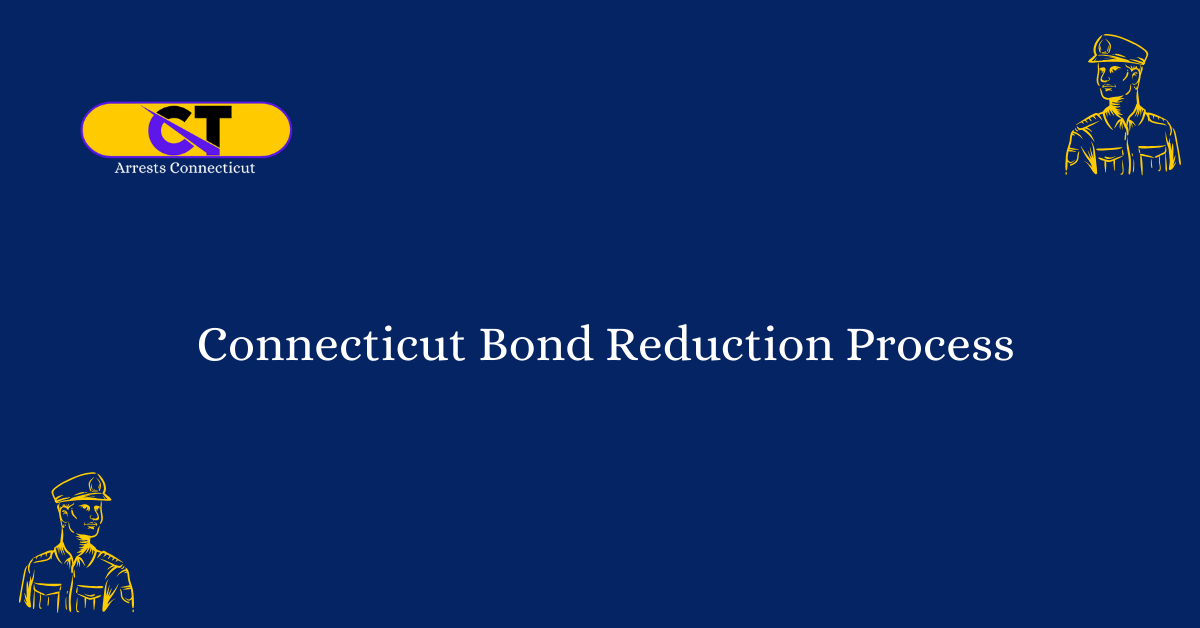Connecticut Bond Reduction Process
In the state of Connecticut, there is a unique and efficient process in place for reducing bond amounts. This process is designed to provide defendants with a fair and accessible opportunity to have their bond reduced, ensuring that they are not held in custody for longer than necessary. By understanding the Connecticut bond reduction process, defendants and their legal representatives can navigate the system with confidence and advocate for a more reasonable bond amount.
Through a series of hearings and evaluations, the Connecticut bond reduction process allows defendants to present evidence and arguments to support a reduction in their bond amount. This can be based on a variety of factors, such as financial constraints, ties to the community, or the absence of flight risk. By engaging in this process, defendants have the opportunity to secure a lower bond, which can significantly impact their ability to secure release from custody and effectively navigate their legal proceedings.
Importance of the Bond Reduction Process
In the state of Connecticut, defendants facing criminal charges have the opportunity to navigate the unique and efficient bond reduction process. This process is crucial in ensuring that defendants are not unjustly held in custody for longer than necessary. By understanding how this process works, defendants and their legal representatives can confidently advocate for a more reasonable bond amount.
A Fair and Accessible Opportunity for Defendants
The Connecticut bond reduction process is designed to be fair and accessible to all defendants. It provides them with a platform to present evidence and arguments that support a reduction in their bond amount. This means that defendants have the chance to demonstrate their financial constraints, ties to the community, or the absence of flight risk.
Hearings and Evaluations
During the bond reduction process, defendants can expect a series of hearings and evaluations. These proceedings allow them to present their case and provide any necessary evidence to support their request for a lower bond. The court carefully considers all factors brought forward and makes a decision based on the merits of each case.
Financial Constraints and Release from Custody
One of the key factors that defendants can argue during the bond reduction process is their financial constraints. By presenting evidence of their inability to afford the current bond amount, defendants can effectively advocate for a reduction. This can greatly impact their ability to secure release from custody, allowing them to continue with their daily lives while awaiting their legal proceedings.
Ties to the Community
Another important consideration in the bond reduction process is the defendant’s ties to the community. By demonstrating strong connections to family, employment, or community organizations, defendants can highlight their commitment to remaining in the area and participating in their legal proceedings. This can provide reassurance to the court that they are not a flight risk.
Navigating Legal Proceedings Effectively
Securing a lower bond through the reduction process can have a significant impact on defendants’ ability to effectively navigate their legal proceedings. By being released from custody, defendants can actively participate in their defense, consult with their legal representatives, and gather evidence to support their case. This ensures a fair and just legal process.
FAQs
What is the bond reduction process in Connecticut?
The bond reduction process in Connecticut is a unique and efficient system designed to provide defendants with a fair and accessible opportunity to have their bond amounts reduced. This ensures that they are not held in custody for longer than necessary.
How does the bond reduction process work?
The bond reduction process in Connecticut involves a series of hearings and evaluations. Defendants are allowed to present evidence and arguments to support a reduction in their bond amount. This can be based on factors such as financial constraints, ties to the community, or the absence of flight risk.
Why is it important to understand the bond reduction process?
Understanding the bond reduction process in Connecticut is crucial for both defendants and their legal representatives. It allows them to navigate the system with confidence and advocate for a more reasonable bond amount. A lower bond can significantly impact the defendant’s ability to secure release from custody and effectively navigate their legal proceedings.
Who can engage in the bond reduction process?
Any defendant who is facing a bond can engage in the bond reduction process in Connecticut. It is available to all individuals who believe their bond amount should be lowered based on the specific circumstances of their case.
What are the benefits of securing a lower bond amount?
Securing a lower bond amount can have significant benefits for defendants. It increases their chances of being released from custody, allowing them to continue with their daily lives while awaiting trial. It also reduces the financial burden associated with a higher bond amount.
How can defendants and their legal representatives navigate the bond reduction process?
To navigate the bond reduction process in Connecticut, defendants and their legal representatives should gather all relevant evidence and arguments to support a reduction in the bond amount. They should present their case clearly and effectively during the hearings, highlighting the factors that justify a lower bond.
Conclusion
The Connecticut bond reduction process is a crucial aspect of the criminal justice system. It provides defendants with a fair and accessible opportunity to advocate for a more reasonable bond amount. By understanding this process and engaging in it confidently, defendants can secure their release from custody and effectively navigate their legal proceedings.







